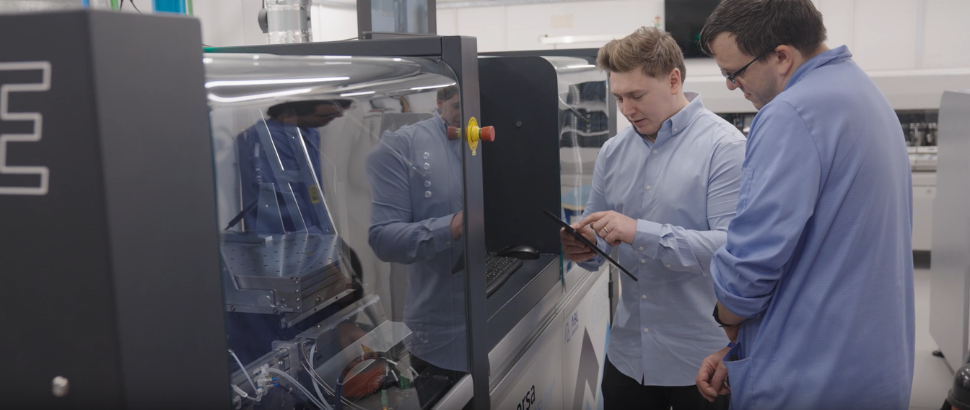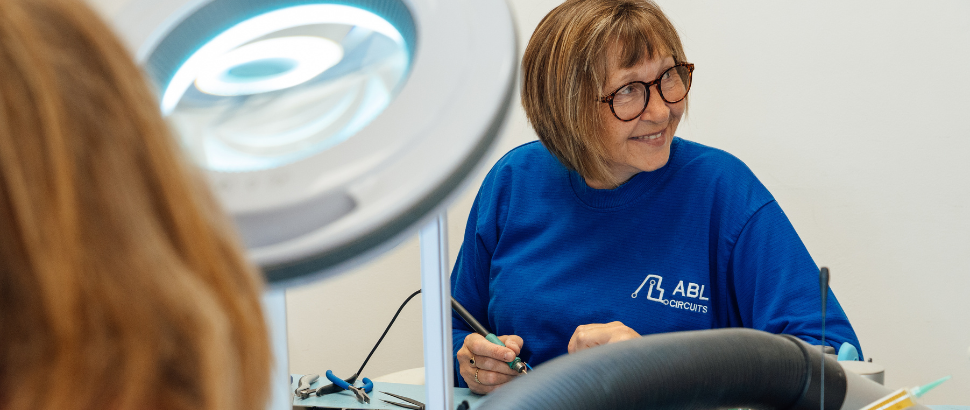News, Blogs & Articles
.png)
What’s the Difference Between PCB Manufacture and Assembly?
Case Study
March 11, 2025
PCB manufacture and PCB assembly are two distinct phases in the creation of electronic devices. In simple terms, PCB manufacture is the process of creating the bare circuit board itself, while PCB assembly involves placing and soldering components onto that board to create a functional electronic circuit.
PCB Manufacture Explained
PCB manufacture focuses on producing the bare circuit board - the physical substrate that will eventually hold all electronic components. This process typically involves:
- Design and Layout: Creating the circuit pattern using specialised CAD software.
- Material Selection: Choosing appropriate substrate materials, typically fibreglass-reinforced epoxy laminate (FR-4) or other materials depending on the application.
- Printing: Transferring the circuit design onto the copper-clad board.
- Etching: Removing unwanted copper, leaving only the desired conductive pathways.
- Drilling: Creating holes for vias and component connections.
- Layering and Pressing: For multi-layer PCBs, stacking and bonding multiple layers together.
- Surface Finishing: Applying protective coatings like HASL, ENIG, or immersion silver to protect the copper and improve solderability.
The end result of the manufacturing process is a bare circuit board with conductive traces and pads, but no electronic components.
PCB Assembly Explained
PCB assembly is the subsequent process where electronic components are mounted onto the manufactured bare board. This typically includes:
- Component Procurement: Sourcing all required electronic components (resistors, capacitors, ICs, connectors, etc.).
- Solder Paste Application: Applying solder paste to the pads where components will be placed.
- Pick and Place: Using automated machinery to precisely position components onto the board.
- Reflow Soldering: Heating the board to melt the solder paste and create permanent connections.
- Through-Hole Component Insertion: Manually or automatically inserting components with leads through the board’s holes (if applicable).
- Wave Soldering: For through-hole components, using a wave of molten solder to create connections.
- Inspection and Testing: Checking for manufacturing defects and verifying functionality.
- Cleaning: Removing flux residues and other contaminants.
The assembly process transforms the inactive bare board into a functional electronic circuit.
Key Differences at a Glance
PCB Manufacture
- Creates the bare circuit board
- Focuses on the substrate and copper traces
- Ends with a non-functional board
- Involves material processing
PCB Assembly
- Places components on the board
- Focuses on electronic components
- Results in a working electronic circuit
- Involves component handling
Why Understanding the Difference Matters
Understanding the distinction between PCB manufacture and assembly is critical for project planning, cost estimation, and quality control. Some projects may require only manufacturing services if you plan to handle assembly in-house, while others might benefit from a turnkey solution that includes both manufacturing and assembly.
Different suppliers may specialise in one area or the other, or offer comprehensive services covering both. By understanding exactly what your project requires, you can select the right partner and service level.
When to Choose Manufacturing-Only vs. Full Assembly
Consider manufacturing-only services when:
- You have in-house assembly capabilities
- You’re producing prototype boards for testing
- Your design is still evolving
- You need to control component selection and sourcing
Choose full assembly services when:
- You need a complete, ready-to-use product
- You lack in-house assembly equipment or expertise
- You’re working with complex components (BGAs, fine-pitch ICs)
- You want to minimise handling and potential damage
- Time-to-market is critical
Get Expert PCB Manufacturing and Assembly from ABL Circuits
At ABL Circuits, we offer comprehensive PCB solutions covering both manufacturing and assembly to meet your specific project requirements. Our state-of-the-art facilities and experienced team ensure high-quality results at every stage of the process.
Whether you need bare boards produced to exacting standards or fully assembled and tested PCBs ready for integration, we have the expertise to deliver.
Contact us today to discuss your project requirements and discover how our manufacturing and assembly services can help bring your electronic designs to life with precision and reliability.
Call ABL Circuits on 01462 894312, email sales@ablcircuits.co.uk or request a quote and get started on your next PCB project.
News, Blogs & Articles















